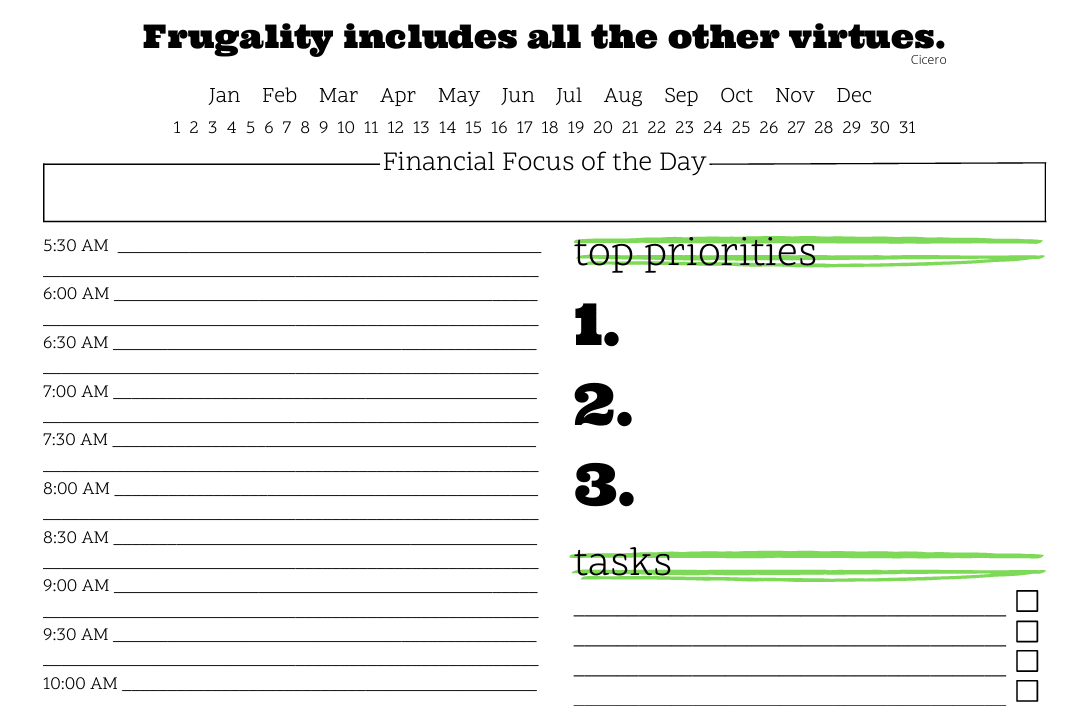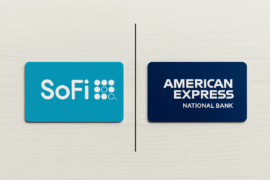This article may contain references to products or services from one or more of our advertisers or partners. We may receive compensation when you click on links to those products or services. Nonetheless, our opinions are our own.
Robo advisors have revolutionized the investment industry, making it easier for individuals to access automated investing services. SoFi and Wealthfront are two popular names in this space, each offering unique features and benefits. But which one is better? In this blog, we will compare SoFi and Wealthfront, looking at their key features, costs, investment options, and more, so you can make an informed decision. Whether you’re a beginner investor or an experienced one, read on to find out which platform may be the right fit for you.
Understanding SoFi and Wealthfront
Before we delve into the specifics, let’s understand what SoFi and Wealthfront are all about. Both platforms are investment platforms that offer automated investing services. They provide a range of financial products and services, allowing individuals to invest and grow their wealth. With automated investing, users can benefit from portfolio management strategies based on their risk tolerance and investment goals, without the need for extensive financial knowledge or time commitment.
A Brief About SoFi
SoFi invest is a comprehensive financial platform that goes beyond automated investing. It offers a range of financial products, including student loan refinancing, personal loans, mortgages, and more. SoFi invest allows users to open an investment account, giving them access to fractional shares. This means users can invest in stocks and exchange-traded funds (ETFs) without needing to purchase full shares. Additionally, SoFi invest provides cash management accounts, which function as both a savings account and a checking account, offering features like high-interest rates and debit cards.
SoFi invest also offers retirement accounts, allowing users to save for their future. With a brokerage account, users can invest in taxable accounts and build a diversified investment portfolio. But what sets SoFi apart is its focus on financial advice. The platform provides access to certified financial planners who can offer personalized investment strategies and guidance, ensuring that users have professional support in achieving their financial goals.
A Brief About Wealthfront
Wealthfront is another popular robo advisor known for its automated investment management services. The platform focuses on diversified portfolio management, offering users a selection of investment options. With Wealthfront, users can create a diversified portfolio that aligns with their risk tolerance, investment goals, and time horizon.
One standout feature of Wealthfront is the wealthfront cash account, which functions as a high-yield savings account. It offers a competitive interest rate, making it an attractive option for individuals looking to grow their cash savings. Wealthfront also provides taxable brokerage accounts, allowing users to invest in a wide range of investment options, including individual stocks, ETFs, and more.
Wealthfront doesn’t stop at automated investing; it also offers access to human financial planners through its subsidiary, Wealthfront Advisers LLC. This gives users the opportunity to receive investment advice and guidance from financial professionals, ensuring that their investment strategies align with their financial goals and risk tolerance.
Distinguishing Features of SoFi and Wealthfront
Now that we have a brief understanding of SoFi and Wealthfront, let’s look at some of the key features that distinguish these two platforms. While they both provide automated investing services, there are some differences in terms of the investment options, account types, and additional services they offer. Let’s dive deeper into these distinctions.
Key Features of SoFi
- SoFi invest offers fractional shares, allowing users to invest in stocks and ETFs without needing to purchase full shares, making investing more accessible and affordable.
- The platform provides investment accounts, including brokerage accounts, retirement accounts, and taxable accounts, giving users the flexibility to invest based on their financial goals and needs.
- SoFi invest also offers cash management accounts, which combine the functionality of a savings account and a checking account. Users can earn interest on their cash deposits while having access to daily spending through a debit card.
- With SoFi, users can benefit from financial advice provided by certified financial planners. They can access human advisors, who can tailor investment strategies to individual needs, providing personalized guidance and support.
- SoFi invest offers a diversified portfolio, with options to invest in a wide range of financial products, including individual stocks, mutual funds, and real estate investment trusts (REITs). This allows users to create a diversified investment portfolio, spreading risk across multiple asset classes.
Key Features of Wealthfront
- Wealthfront offers automated investment management, taking care of portfolio management for users. It diversifies investments across various asset classes, based on individual risk tolerance and investment goals.
- One key feature of Wealthfront is tax-loss harvesting, a strategy aimed at minimizing taxes and maximizing investment returns. The platform automatically sells securities that have experienced losses, offsetting taxable gains and reducing the investor’s tax liability.
- The platform offers wealthfront cash accounts, which provide a high-interest savings option. Users can access high-interest rates on their cash deposits, making it an attractive place to park their savings.
- Wealthfront provides portfolio management services, regularly rebalancing investments to maintain the desired asset allocation. This ensures that the portfolio stays aligned with the individual’s risk tolerance and investment objectives.
- With Wealthfront, users have access to unlimited advisory services, allowing them to seek guidance from human financial planners. Whether it’s investment advice, financial planning, or retirement planning, users can tap into the expertise of financial professionals.
SoFi and Wealthfront – Who Stands to Gain?
As with any investment platform, both SoFi and Wealthfront have their own set of benefits to offer. Understanding these advantages can help you determine which platform may be better suited to your needs and financial goals. Let’s take a closer look at the benefits that users can expect from SoFi and Wealthfront, respectively.
Benefits for SoFi Users
- SoFi users who have student loans can benefit from the platform’s diverse range of services. They can access investment options, cash management accounts, and financial advice, all from a single platform.
- SoFi’s investment strategies are designed to help users achieve their financial goals. With access to certified financial planners, users can receive personalized investment advice and guidance tailored to their individual needs.
- For those seeking financial advice, SoFi offers human advisors who can provide support in developing investment strategies, retirement planning, and more. This level of personalization sets SoFi apart, particularly for individuals who value professional guidance and assistance.
- SoFi invest offers a range of investment account options, including taxable accounts, retirement accounts, and brokerage accounts. This allows users to build a diversified investment portfolio that aligns with their financial goals and risk tolerance.
- The platform’s cash management accounts offer convenience and flexibility. Users can earn interest on their cash deposits, access daily spending with a debit card, and enjoy the benefits of having both savings and checking options in one account.
Benefits for Wealthfront Users
Wealthfront users also enjoy a variety of benefits from the platform. Let’s explore some of the advantages that set Wealthfront apart and attract investors.
-Investment management services are a key benefit for Wealthfront users. The platform takes care of portfolio management, ensuring that investments are diversified and aligned with individual risk tolerance and investment goals.
-Access to human financial advisors is another advantage offered by Wealthfront. Users can seek guidance and advice from financial professionals, helping them make informed investment decisions and plan for their financial future.
-The wealthfront cash management account, with its competitive interest rate, offers an attractive option for users who want to earn interest on their cash savings.
-The convenience and flexibility of cash management accounts make it easy for users to access their funds and manage their cash deposits.
-Wealthfront’s platform is designed to cater to a wide range of investment needs. Whether you’re a beginner investor or an experienced one, Wealthfront provides investment options that can be tailored to your risk tolerance, investment goals, and time horizon.
Comparing Costs: SoFi vs Wealthfront
One important factor to consider when choosing an investment platform is the cost involved. Both SoFi and Wealthfront aim to offer competitive fees and low account minimums. Let’s take a closer look at the costs associated with these platforms and compare them to help you make an informed decision.
Understanding SoFi’s Fees and Minimums
SoFi invest offers a fee structure that is attractive to many investors, particularly those looking for low-cost options. Here’s an overview of the fees and minimums associated with SoFi invest:
-SoFi invest has no management fees for automated investing services, making it an affordable option for investors. This means that users can maximize their investment returns without worrying about management fees eating into their profits.
-SoFi invest also offers advisory services, where users can access financial advice from certified financial planners. These services may come with additional fees, depending on the level of personalization and support required.
-For retirement accounts, SoFi invest has minimum balance requirements, which can vary depending on the specific retirement account type. This ensures that users have a minimum investment in their retirement accounts, aligning with their long-term financial goals.
Unraveling Wealthfront’s Fees and Minimums
Wealthfront also aims to provide competitive fees and low account minimums. Here’s what you need to know about the fees and minimums associated with Wealthfront:
-Wealthfront charges an annual advisory fee, which is a percentage of the assets under management. The fee structure is competitive, making it an attractive option for investors.
-For taxable accounts, Wealthfront has no individual stock fees, no investment management fees, and no advisory services fees. This makes it a cost-effective platform for investors looking to invest in taxable accounts.
-The wealthfront cash account interest rate is competitive, attracting users to deposit their cash savings and earn interest on their deposits.
-When it comes to minimum balance requirements, Wealthfront sets a minimum investment amount for taxable brokerage accounts. This ensures that users have a minimum investment in place, aligning with their investment goals.
Delving Deeper into Robo Investing with SoFi and Wealthfront
Now that we have explored the key features and costs associated with SoFi and Wealthfront, let’s delve deeper into various aspects of robo investing to understand how these platforms approach different strategies and services. From human financial planners to tax-loss harvesting, we will explore the role of human advisors, investment options, rebalancing approaches, customer support, and cash management services offered by both SoFi and Wealthfront.
The Role of Human Financial Planners in SoFi and Wealthfront
While both SoFi and Wealthfront offer automated investing services, they also provide access to human financial planners, who can play a crucial role in investment strategies. Let’s explore how SoFi and Wealthfront utilize certified financial planners and human advisors to offer personalized financial advice.
-In SoFi, users have access to certified financial planners who can provide personalized investment strategies and guidance. These professionals have expertise in financial planning, retirement planning, and investment management. Their role is to understand individual financial goals, risk tolerance, and investment preferences, and tailor investment strategies to align with these factors.
-Wealthfront, too, offers access to human financial planners, giving users the opportunity to seek advice from financial professionals. These advisors can provide guidance on investment decisions, asset allocation, and retirement planning, helping users make informed choices based on their individual needs.
-Both platforms recognize the importance of personalized financial advice, acknowledging that investment strategies should be tailored to individual goals and risk tolerance. The role of human financial planners ensures that users have the opportunity to receive guidance and support from professionals who understand their unique financial circumstances.
A Look at SoFi and Wealthfront’s Tax-Loss Harvesting
Tax-loss harvesting is a strategy used by investment platforms like SoFi and Wealthfront to minimize taxes and maximize investment returns. Let’s take a closer look at how tax-loss harvesting works, and how SoFi and Wealthfront utilize this strategy to benefit their users.
-SoFi invest utilizes tax-loss harvesting to help users minimize their taxable gains. The platform automatically sells securities that have experienced losses, offsetting taxable gains and reducing the investor’s overall tax liability. This strategy, when carried out effectively, can have a positive impact on investment returns and tax efficiency.
-Wealthfront, too, employs tax-loss harvesting techniques to optimize investment returns and minimize taxes. By selling investments with losses, Wealthfront offsets gains, thereby decreasing the taxable portion of an investor’s portfolio. This can be particularly advantageous for investors in higher tax brackets, as it helps to reduce their overall tax liability.
-Both SoFi and Wealthfront recognize the importance of tax management in investment strategies. By offering tax-loss harvesting services, they aim to provide users with a way to potentially increase returns and minimize taxes, enhancing the overall investment experience.
Investment Options in SoFi and Wealthfront
When it comes to investment options, SoFi and Wealthfront provide users with access to a range of financial products. Let’s explore the investment options offered by both platforms, enabling users to build diversified investment portfolios.
-SoFi invest offers a wide array of investment options, including mutual funds, individual stocks, real estate investment trusts (REITs), and exchange-traded funds (ETFs). This allows users to create diversified investment portfolios, spreading risk across multiple asset classes. Whether users are interested in investing in individual stocks or prefer a more diversified approach, SoFi invest caters to a variety of investment preferences.
-Wealthfront, on the other hand, offers investment options that include ETFs, which represent diversified portfolios across various asset classes. This approach allows users to access diversified investment options without needing to select individual stocks or mutual funds. By investing in ETFs, users gain exposure to a broader range of investments, reducing risk through diversification.
-Both platforms recognize the importance of diversification in investment portfolios. By offering investment options such as mutual funds, individual stocks, and ETFs, SoFi and Wealthfront allow users to tailor their investment portfolios based on their risk tolerance, investment goals, and personal preferences.
The Rebalancing Approach of SoFi and Wealthfront
Maintaining a balanced portfolio is crucial for long-term investment success. Both SoFi and Wealthfront employ strategies to ensure that investment portfolios remain aligned with individual risk tolerance and investment goals. Let’s explore how these platforms approach portfolio rebalancing.
-SoFi invest offers portfolio options, allowing users to invest in a diversified portfolio that aligns with their risk tolerance and investment goals. The platform employs automated rebalancing, which ensures that the portfolio remains aligned with the target asset allocation. If market conditions cause the portfolio to deviate from its desired balance, SoFi invest automatically adjusts the holdings to realign with the target allocation.
-Wealthfront, too, focuses on portfolio management. The platform employs a similar approach, utilizing automated rebalancing techniques to maintain the desired asset allocation. If market movements cause the portfolio to deviate from the target balance, Wealthfront adjusts the holdings to realign with the desired allocation.
-Both SoFi and Wealthfront understand the importance of regularly rebalancing investment portfolios. By ensuring that the portfolio stays aligned with the target asset allocation, these platforms aim to maximize returns while managing risk. Automated rebalancing takes the burden off users, allowing them to focus on their long-term investment strategies.
Customer Support: SoFi vs Wealthfront
When it comes to investing, having reliable customer support is essential. SoFi and Wealthfront understand the importance of providing assistance and support to their users. Let’s explore how these platforms approach customer support and ensure that user inquiries, concerns, and requests are addressed promptly.
-SoFi invest offers customer support services, providing users with access to assistance and guidance when needed. Whether it’s help with account setup, investment advice, or general inquiries, users can rely on SoFi’s customer support team for prompt assistance.
-Wealthfront provides unlimited access to customer support, ensuring that users have access to assistance whenever they need it. Whether it’s a question about investment options, account management, or general inquiries, Wealthfront’s customer support team is there to provide guidance and support.
-Both platforms take user privacy and data security seriously. SoFi and Wealthfront have measures in place to protect personal information, ensuring that user data is secure and confidential.
-Customer support plays a crucial role in enhancing the overall user experience. By offering prompt assistance, both SoFi and Wealthfront aim to provide a seamless investment experience, where users can find support and get their queries resolved efficiently.
Cash Management in SoFi and Wealthfront
-In addition to investment services, both SoFi and Wealthfront offer cash management accounts, providing users with a way to manage their cash deposits effectively. These accounts function as both savings accounts and checking accounts, offering a range of features designed to meet the financial needs of users.
-SoFi invest provides cash management accounts, allowing users to earn interest on their cash deposits while maintaining access to daily spending through a debit card. This integrated approach to cash management provides convenience, flexibility, and the opportunity to earn interest on cash savings, making it an attractive option for users.
-Wealthfront, too, offers cash management accounts, allowing users to access high-interest savings options. These accounts enable individuals to earn interest on their cash deposits, providing an attractive alternative to traditional savings accounts.
-By offering cash management accounts, both SoFi and Wealthfront cater to users’ cash management needs, giving them the flexibility to access funds, earn interest on savings, and manage their financial resources effectively. These accounts streamline the investing and cash management process, ensuring that users have access to all the financial services they need in one platform.
Frequently Asked Questions
How does SoFi’s account types compare to Wealthfront’s?
SoFi and Wealthfront offer different account types. SoFi provides a wider range of options, including checking and savings accounts, personal loans, and investment accounts. On the other hand, Wealthfront focuses solely on investment accounts like individual brokerage and retirement accounts. Both platforms offer automated investing with low fees. The best choice depends on your financial goals and needs.
Is SoFi a worthy investment?
Considering the variety of investment options SoFi offers, including stocks, ETFs, and cryptocurrency, along with low fees and no account minimums, it’s worth considering. Additional financial planning services make it an attractive choice. Ultimately, whether SoFi is a worthy investment depends on individual financial goals and risk tolerance.
Can you trust Wealthfront with your money?
Wealthfront, a registered investment advisor with the SEC, prioritizes the security of your money. With robust security measures in place, they offer automated investing based on your risk tolerance, ensuring a diversified portfolio. Their transparent fee structure includes no trading or commission fees. While returns aren’t guaranteed, Wealthfront has a track record of positive returns for clients.
Deciding the Superior Robo Advisor: SoFi or Wealthfront
Which robo advisor is better: SoFi or Wealthfront? SoFi offers a unique combination of investment and banking services with low fees, while Wealthfront boasts a strong track record in managing investments through its automated portfolio management system. The right choice depends on your financial goals and investment preferences.
Other Viable Alternatives to SoFi and Wealthfront
Looking for alternatives to SoFi and Wealthfront? Consider Betterment, a popular option known for its user-friendly interface. Ellevest is another platform focused on empowering women investors. If you prefer commission-free investing and customizable portfolios, M1 Finance might be the right choice for you. Lastly, Robinhood offers free trading of stocks, ETFs, and cryptocurrencies.
Who should be your go-to Robo Advisor – SoFi or Wealthfront?
When deciding between SoFi and Wealthfront as your go-to Robo Advisor, consider factors like investment goals and preferences. SoFi offers a wider range of financial products and services, including loans and banking, while Wealthfront has a lower minimum investment requirement and a more diversified portfolio. Evaluate fees, investment strategies, and customer service to make the right choice.
Conclusion
To sum up, both SoFi and Wealthfront have their unique features and benefits. SoFi offers a comprehensive suite of financial services, including investment options, cash management, and access to human financial planners. On the other hand, Wealthfront excels in tax-loss harvesting and offers a wide range of investment options.
When it comes to costs, SoFi has transparent fees and minimums, while Wealthfront has low-cost investing with no minimums. Both platforms provide robust customer support and prioritize the security of your funds.
Ultimately, the choice between SoFi and Wealthfront depends on your specific financial goals and preferences. Consider factors such as investment strategy, account types, and additional features like cash management. Explore other viable alternatives as well before making a decision.
Remember to conduct thorough research and carefully evaluate your options before entrusting your money to any robo advisor.

Reviewed and edited by Albert Fang.
See a typo or want to suggest an edit/revision to the content? Use the contact us form to provide feedback.
At FangWallet, we value editorial integrity and open collaboration in curating quality content for readers to enjoy. Much appreciated for the assist.
Did you like our article and find it insightful? We encourage sharing the article link with family and friends to benefit as well - better yet, sharing on social media. Thank you for the support! 🍉
Article Title: SoFi vs Wealthfront: Which is Better?
https://fangwallet.com/2024/02/04/sofi-vs-wealthfront-which-is-better/The FangWallet Promise
FangWallet is an editorially independent resource - founded on breaking down challenging financial concepts for anyone to understand since 2014. While we adhere to editorial integrity, note that this post may contain references to products from our partners.
The FangWallet promise is always to have your best interest in mind and be transparent and honest about the financial picture.
Become an Insider

Subscribe to get a free daily budget planner printable to help get your money on track!
Make passive money the right way. No spam.
Editorial Disclaimer: The editorial content on this page is not provided by any of the companies mentioned. The opinions expressed here are the author's alone.
The content of this website is for informational purposes only and does not represent investment advice, or an offer or solicitation to buy or sell any security, investment, or product. Investors are encouraged to do their own due diligence, and, if necessary, consult professional advising before making any investment decisions. Investing involves a high degree of risk, and financial losses may occur including the potential loss of principal.
Source Citation References:
+ Inspo












































